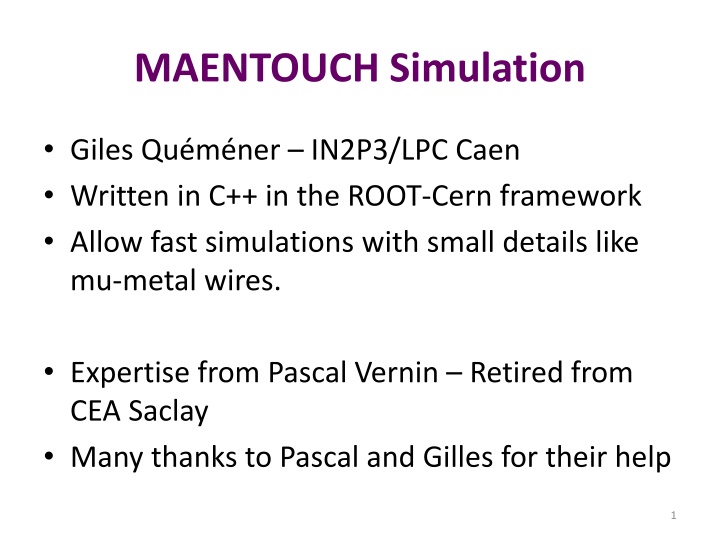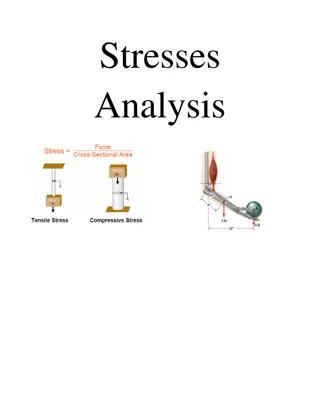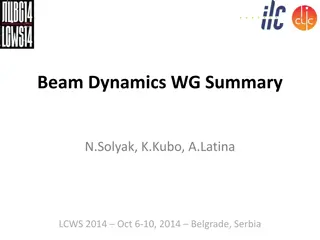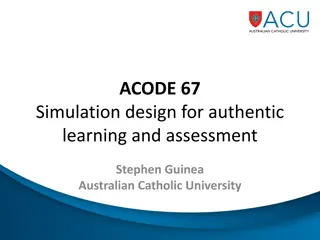Fast Simulation Details in MAENTOUCH Simulation by Giles Qu. and Pascal Vernin
MAENTOUCH Simulation by Giles Qu. and Pascal Vernin allows for fast simulations with small details like mu-metal wires, featuring expert contributions for validation and optimization using soft iron materials. The simulations cover various geometries, validation of computed stray fields, and combinations of soft iron boxes with IN20 walls. Additionally, mu-metal shielding around PMTs is explored for effective electromagnetic field containment.
Download Presentation

Please find below an Image/Link to download the presentation.
The content on the website is provided AS IS for your information and personal use only. It may not be sold, licensed, or shared on other websites without obtaining consent from the author.If you encounter any issues during the download, it is possible that the publisher has removed the file from their server.
You are allowed to download the files provided on this website for personal or commercial use, subject to the condition that they are used lawfully. All files are the property of their respective owners.
The content on the website is provided AS IS for your information and personal use only. It may not be sold, licensed, or shared on other websites without obtaining consent from the author.
E N D
Presentation Transcript
MAENTOUCH Simulation Giles Qu m ner IN2P3/LPC Caen Written in C++ in the ROOT-Cern framework Allow fast simulations with small details like mu-metal wires. Expertise from Pascal Vernin Retired from CEA Saclay Many thanks to Pascal and Gilles for their help 1
Simple geometry 2 bo tes imbriqu es 2 plans de PM Z = 1.70 Z = 3.10 Ecran 5.5 x 3.5 m2 Centre: (1.5,0,2,1.75) z x Bobines Helmotz (0,-0.9,1.3) y 2
Cut View Y=cste Plans PM Z=1.7 m Z=3.1 m 2.8 m Bo te externe 10 mm acier Centre = (3.8,0,1.7) 0.15 m Plaques de toit 2 x 10 mm acier 0.20 m 3.4 m Murs internes 10 mm acier 2.2 m Plaque de fond 10 mm acier Plaque de r partition Coussins d air 3
Cut View X=cste Plans PM Z=1.7 m Z=3.1 m Bo te externe 10 mm acier 4.2 m Plaques de toit 2 x 10 mm acier 3.4 m Murs internes 10 mm acier Centre = (3.8,0,1.7) 0.20 m Plaque de fond 10 mm acier Only the external blue box and the IN20 wall have been simulated so far 4
Principle First validation of computed stray field: comparison with the field map provided by IN20 + independent calculations by P. Vernin: First trial with standard steel showed that this material is not efficient enough. all simulations used soft iron. No real _r curve implemented. Instead a rather safe _r = 2000 is used and saturation (B>1.5 T) is checked in all cells. 5
Combination of soft iron box and IN20 wall Box (mm) Wall (mm) Saturation In wall Force on coils (N) Max field (G) 6 6 yes - 4 8 no - 1.6 G 6 8 no 165 1.3 G 6 10 no 173 1.2 G 6
Combination of soft iron box and IN20 wall Example of 4 mm box, 8 mm wall 7
Mu-metal Shielding Mu-metal cylinder around the PMTs: 1.1 mm thick = 219 mm h extended from 201 to 280 mm (but almost no effect at the level of the cathode and first dynode) x xx B vs Z computed along 3 different lines 5 cm mesh 8
Mu-metal Shielding External field: Bx=0, By=0, Bz=1G Cylinder + grid + endcap NB: B<0.14 G in whole volume for Bx=1G, By=0, Bz=0 Bx Bz By 9
Mu-metal Shielding External field: Bx=0, By=0, Bz=1G Cylinder, no grid, no endcap NB: B<0.14 G in whole volume for Bx=1G, By=0, Bz=0 Bx Bz By 10
Iron + Mu-metal boxes External box, outside the shielding structure Mu-metal box, tight to the inner face of the polyethylene 11
Iron + Mu-metal boxes External box, outside the shielding structure Mu-metal box, fixed to the inner face of the polyethylene 13
Margins Tried different thicknesses of iron and mu-metal. Meet the specification of 0.1 G between 6 and 8 mm of iron combine with 1 to 1.5 mm of mu- metal. Current design with 10 mm iron + 1.5 mm mu- metal. ~0.5 G inside the detector could be acceptable The design provide some margin but we are sensitive to gaps between plates at the 2 mm level 14























